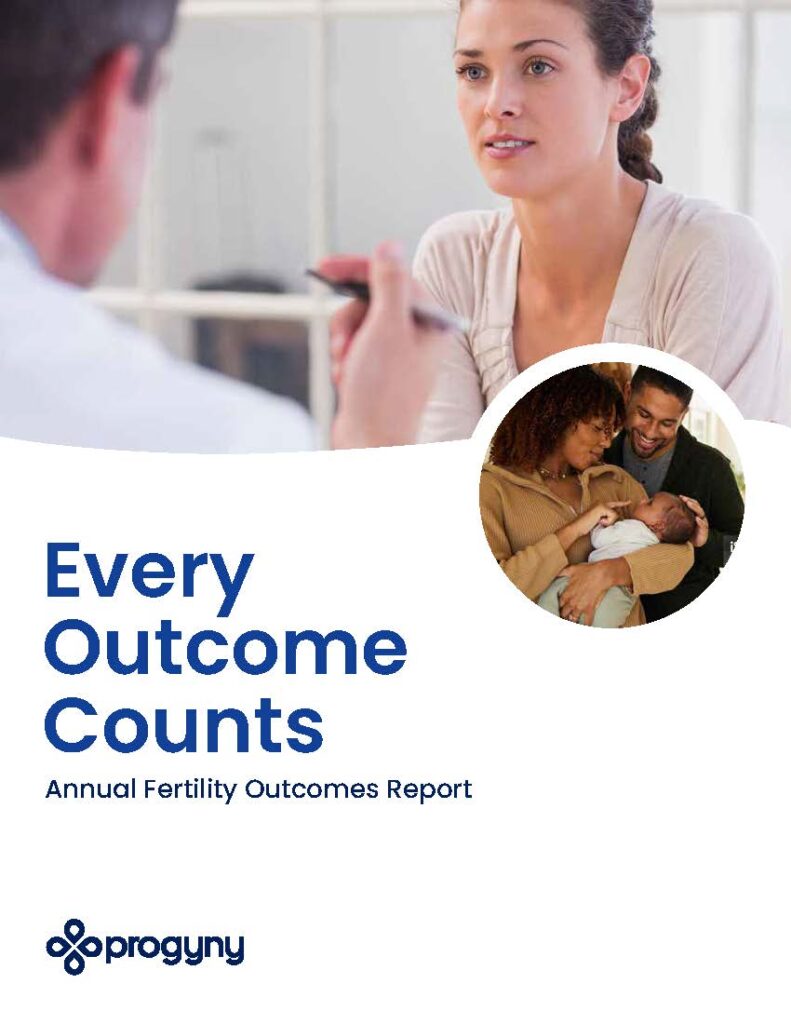Superior Outcomes. Proven Impact.
#1 performing fertility solution at scale across all fertility outcomes tracked by the CDC
19,000 transfers annually — a vastly larger scale than other fertility solutions
Only company to publish outcomes every year since its founding — a decade running
Outcomes employers can trust
As healthcare costs rise, it’s more important than ever for employers who support their members’ family building needs to have assurance that their benefit dollars are driving industry-leading outcomes. Progyny is proud to be the only solution to independently validate all fertility clinical outcomes for all member data — by Milliman — rather than just for a select subset of members or sample of select outcomes.
Our Annual Fertility Outcomes Report demonstrates, once again, Progyny significantly exceeds national benchmarks on every key clinical measure of fertility success.1 Progyny’s members conceive faster, experience significantly fewer miscarriages, and have healthier pregnancies and babies, as compared to national averages — and even when compared to non-Progyny patients attending the same clinics.

Industry-leading results for members and employers
More healthy pregnancies
Pregnancy rate per IVF transfer measures the percentage of IVF treatments that result in a clinical pregnancy. Progyny’s pregnancy rate per IVF transfer is 12% higher than the national average and its miscarriage rate is 21% lower.
More healthy babies
The goal for anyone pursuing infertility care is a healthy baby. Live birth rate — the percentage of embryo transfers that result in a live birth — is the leading indicator for a solution’s likelihood to deliver on this goal. Progyny members’ live birth rate is 23% higher than the national average.
Fewer treatments
The retrieval per live birth rate is a comprehensive measure that tracks the success rate of IVF cycles from the initial egg retrieval to birth. Progyny’s model leads to 41% fewer retrievals per live birth than the national average.
Fewer high-risk pregnancies and NICU visits
Singleton pregnancies are most likely to deliver at term while multiple pregnancies (twins, triplets) carry a significantly higher risk for both miscarriage and preterm birth — making single births the surest path to healthy babies. SET rate is the percentage of IVF transfers where a single embryo transfer occurred. Progyny’s SET rate is 22% better than the national average and its IVF multiples rate is 61% lower than the national average.
Progyny is the only solution to:

The Progyny difference
-
A seamless member experience
-
Directly credentialed, actively managed provider network
-
Smarter benefits design that removes financial barriers
-
Rigorous utilization management for clinical excellence
-
Data-driven care with comprehensive outcome tracking
1. Progyny engaged Milliman, Inc., an independent global leader in actuarial services, to evaluate the methodology Progyny uses to compare its clinical outcomes to national benchmarks. Read more.
2. Progyny represents Progyny in-network provider clinic averages for Progyny members based on the 12-month period ended December 31, 2023. For each Progyny outcome presented, the p-value when compared to the national average is <0.0001.
3. Calculated based on the Society for Assisted Reproductive Technology, or SART, 2021 National Summary Report, finalized in 2024.
4. Calculated based on CDC, 2022 National Summary and Clinic Data Sets, published in 2024.